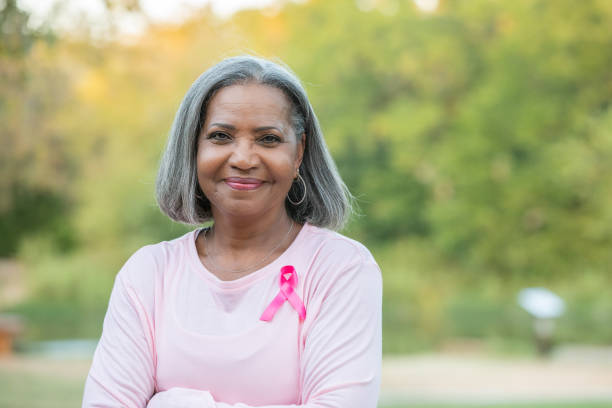
A condition called lymphedema is a well-known side effect of breast cancer treatment that can lead to swelling in the arms and legs.
New research suggests that Black women experience more than three times the risk of this painful issue compared to white women.
"Lymphedema worsens quality of life for breast cancer patients," the study's lead author, Dr. Andrea Barrio says.
Understanding the links between race, cancer treatment and the effects of treatment could ultimately help improve the quality of life for breast cancer patients and survivors, Barrio said in a news release from the San Antonio Breast Cancer Symposium.
The researchers measured patients' arm volume at baseline, after their surgery and at six-month intervals. The study defined lymphedema as a relative volume change of 10% or greater from the baseline.
At 24 months of follow-up, about 25% of the women had developed lymphedema. Black women had a 3.5-fold increased risk compared to white women, the findings show.
Lymphedema has been somewhat overlooked in the research arena, Dr. Stephanie Bernik, an associate professor of breast surgery at Icahn School of Medicine at Mount Sinai in New York City says.
RELATED: These 7 Exercises Will Help Ease Your Pain After Breast Cancer Surgery
Why the racial disparity?
"This study hints at some of the possible reasons for racial disparity, as women with lymphedema were more likely to undergo radiation therapy and chemotherapy before surgery," Bernik shares.
"Black women with lymphedema were also more likely to have a higher BMI [body mass index], a known risk factor for developing lymphedema. There very well may also be a genetic component but more study needs to be directed to the root causes of the problem," she adds.
The type of treatment seemed to make a difference. Women who had received neoadjuvant chemotherapy — chemo before surgery — and then lymph node removal were twice as likely to develop lymphedema as their counterparts who had upfront surgery followed by axillary lymph node dissection, the study found.
Barrio said other research has proven that Black women are often diagnosed with later-stage breast cancer. They are thus more likely to need axillary surgery that can increase the risk for lymphedema. Still, the Black race was the strongest predictor of lymphedema development.
Other factors associated with a higher risk of lymphedema were older age and increasing time from surgery.
Symptoms
The symptoms of lymphedema may include:
- Your arm, leg, or another part of your body has a little swelling at first, but gets bigger over time.
- The skin in that area feels tight, and sometimes has a tingling sensation.
- The arm or leg with lymphedema feels heavy.
- Clothing and jewelry fit more tightly on the affected area.
- The skin looks thicker or leathery.
RELATED: Surgery Could Boost Survival for Women With Advanced Breast Cancers
Prevention
If you notice any swelling after cancer treatment, talk to your doctor about what is causing it and how best to treat it. You should also ensure that there are no other causes of the swelling that may need immediate treatment such as a blood clot.
Treatment
Lymphedema can be treated in the following ways:
Exercise. Try moving your swollen arm or leg. It may help drain the lymph fluid and reduce the swelling.
A compression sleeve or stocking. Placing this tight-fitting garment on your swollen arm or leg can help the lymph fluid flow out.
Massage therapy. Try getting a special kind of massage (called manual lymph drainage), which can help push the lymph fluid out of the swollen part of your body.
A pneumatic pump. A pneumatic pump is a machine that inflates a sleeve that you place on your swollen arm or leg, helping lymph fluid flow out.
Weight loss. In patients who are overweight, lymphedema related to breast cancer may improve with weight loss.
Surgery. If you have severe lymphedema, your doctor may suggest that you get an operation.
Cancer treatment. If a cancerous tumor is causing lymphedema, you may need further cancer treatment.
Essentially, the best way to manage lymphedema is by preventing infections and allowing fluids to flow through the swollen area.









